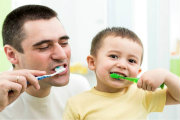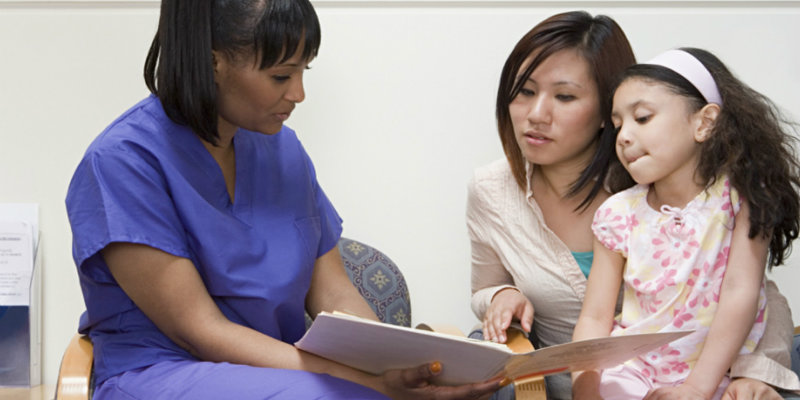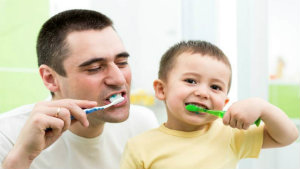Why We Need More Health Education. And How One Professor is Answering the Call.


James M. Loy, Miami University
Society is in the midst of a serious health crisis, and it’s often an epidemic of our own making. On average, we tend to eat too poorly, stress too much, sleep too little, and exercise even less. These unhealthy behaviors all lead to what’s collectively known as chronic disease and it’s the leading cause of death in America today.
Chronic disease includes stress, heart disease, diabetes, obesity and more, and it’s a growing concern among public health professionals. But even as deadly as these diseases can be, most are also manageable and ultimately preventable.
So for Valerie Ubbes, Miami University associate professor of public health, the solution is clear. “We need to do more with health education and health literacy,” she says. “There is a world out there that needs good, reliable, and valid health information.”
With chronic disease on the rise among adults, and now that standardized testing has even marginalized health-related subjects in many public schools, finding ways to communicate important health-related messages has become critical. And it’s this need for more information and awareness that informs the core of Ubbes’ work. 
As part of Miami’s College of Education, Health and Society (EHS), Ubbes explores the relationship between health education, technology, and digital literacy to help people of all ages live much healthier lives.
But her emphasis on education is more than just about getting others to understand wellness concepts and follow healthy behaviors. That’s part of it. But her approach goes further. Ubbes also dives into educational theory and the pedagogical techniques that teach students the fundamentals of functional health literacy which is the ability to read, write, and speak about one’s health.
By taking her classes, students learn how to disseminate public health information more effectively. But they also learn about curriculum, instruction, assessment, and how to build cognitive-behavioral skills among younger learners, especially those with low reading abilities.
In her book, Educating for Health: An Inquiry-based Approach to PreK-8 Pedagogy, for example, Ubbes explains how educators can weave together personal narratives, health and education theories, and practical knowledge to introduce health and wellness to children and youth.
And in the early days of mainstream internet adoption, she was also among the first scholars to promote health and literacy through a digital web-based approach.
Miami’s Center for Digital Scholarship has also played an instrumental role in supporting her Digital Literacy Partnership website. This resource includes three different databases that Ubbes designed and currently maintains. Among them, the Electronic Texts for Health Literacy© uses a vast interdisciplinary database of multisensory narratives, which are designed as educational tools for use in a variety of contexts. 
“The database is for health professionals who are working with people not only in classrooms, but also in community agencies and clinics,” says Ubbes. “There are topics in there around physical activity, nutrition, sleep, oral health, preventative screenings, and so forth. The database contains materials that are known to be valid and reliable, and that can tell a visual textual narrative about how to practice a health habit.”
So far, these narratives have been accessed by more than 40,000 users across 154 countries, and the database continues to expand. Even her Miami students regularly contribute by designing electronic heath literacy texts of their own.
“My undergraduates are encouraged to ‘serve as they learn’ the complexities of health communication and health literacy by working through an extensive editorial process with me - similar to a peer-review process that teacher scholars experience when writing for publication or tailoring educational messages to a specific audience or learner,” Ubbes explains.
More recently, her research has begun to study the efficacy of these digital literacy tools by focusing on one topic in particular, oral health literacy.
“I am working on oral health, specifically under the area of hygiene and decision making,” she says. “Because we know that heart disease and diabetes starts in the mouth. So the earlier we get young people in that habit of brushing and flossing and rinsing the better. Most people do not appreciate the fact that what is going on in the microorganism of the mouth is really what is going on in the larger body.”
The Oral Health Project is meant for children who are in the process of learning how to read and how to take care of their mouths, and this project aims to accomplish both goals at once.
But even the Oral Health Project is just one part of Ubbes’ larger mission. Her work is also about getting children and adults to embrace the healthy attitudes and behaviors that can reduce the risk of most other chronic diseases.
It’s about preparing future health educators and professionals by doing the “bridging work” that combines health information, educational theory, and digital curriculum design.
It’s about engaging different school communities where a well-rounded health-based education is often still lacking.
And as she works to untangle the complexities of public health, especially as it intersects with education and health and society, it’s also work that uniquely aligns with the interdisciplinary goals of EHS, which strives to create a more integrated human experience that increases the wellbeing of everyone.
So in that way, “I have kind of lived the name of our college,” Ubbes says.

